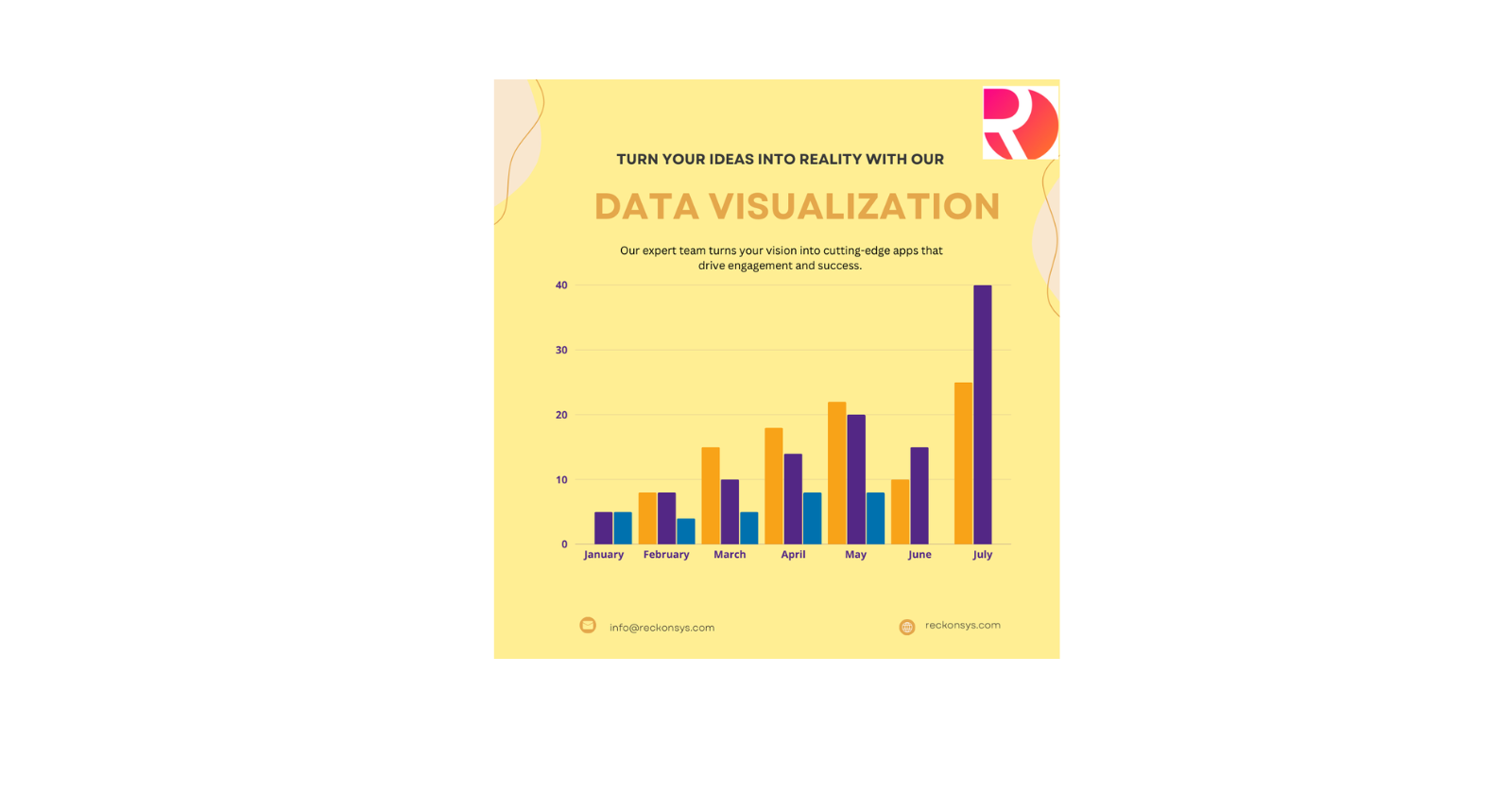How Data Visualization Enhances Customer Analytics and Personalization
 Reckonsys
Reckonsys
In today's data-driven world, customer analytics plays a pivotal role in shaping business strategies, marketing initiatives, and overall customer experience. With vast amounts of customer data available from multiple sources, businesses need efficient ways to make sense of this information to create personalized experiences. Data visualization bridges the gap between raw data and actionable insights, helping organizations not only understand their customers but also tailor their services to meet specific needs.
In this blog, we’ll explore how data visualization enhances customer analytics and personalization, driving better business outcomes.
The Power of Data Visualization in Customer Analytics
Customer analytics involves collecting, processing, and interpreting customer data to understand behavior, preferences, and trends. However, analyzing vast amounts of data can be challenging. This is where data visualization comes in. By converting raw data into clear, visual representations, businesses can identify patterns and trends that might otherwise remain hidden.
Key benefits of using data visualization for customer analytics include:
Improved Data Comprehension
Data visualizations simplify complex datasets into understandable visuals like charts, graphs, heatmaps, and dashboards. This helps businesses quickly grasp customer trends, demographics, and preferences, improving the decision-making process.Quick Insights with Real-Time Data
With real-time data visualization tools, businesses can track customer behavior as it happens. This is particularly useful for industries like e-commerce, where businesses can adjust marketing strategies or offer personalized discounts instantly based on real-time customer interactions.Spotting Hidden Patterns
Visualization tools allow businesses to see connections between various data points that may be difficult to identify in spreadsheets. For example, businesses can use heatmaps to track where customers are spending the most time on a website or use scatter plots to analyze how customer behavior varies across demographics.
Elevating Personalization Through Data Visualization
In a world where personalized experiences can make or break customer loyalty, businesses need precise customer insights to create relevant content, offers, and experiences. Data visualization not only helps businesses understand customers on a deeper level but also empowers them to implement effective personalization strategies.
Here are some ways in which data visualization enhances personalization:
Customer Segmentation
Data visualization helps in segmenting customers based on behavior, demographics, buying patterns, or engagement levels. With tools like clustered graphs or pie charts, businesses can easily categorize their audience into specific groups. This segmentation is crucial for creating personalized marketing campaigns, product recommendations, or loyalty programs tailored to different customer groups.Personalized Marketing Campaigns
Visualizing customer interactions with your brand can provide key insights into what type of marketing content resonates with different audiences. By analyzing click-through rates, purchase histories, and time spent on certain web pages, businesses can tailor marketing efforts. Data visualizations like funnel charts can help track the performance of personalized campaigns, enabling businesses to optimize them based on what drives the most engagement.Product Recommendations
A well-designed visualization system allows companies to match products to customer preferences. Businesses like Amazon and Netflix have perfected the art of recommending products and services based on past customer behavior. Visualizing these data trends through recommendation algorithms ensures more personalized suggestions for every customer, enhancing the user experience and driving conversions.Customer Journey Mapping
Mapping out a customer’s journey visually helps identify touchpoints where personalization can be enhanced. Businesses can see where customers are engaging, dropping off, or converting, allowing them to create tailored experiences at critical points. Sankey diagrams, for example, can show the flow of customers through different stages of their journey, making it easier to refine personalized touchpoints.
Real-World Example: Data Visualization Driving Personalization
One great example of data visualization elevating customer personalization comes from Spotify. The music-streaming giant uses advanced data visualization techniques to analyze millions of user behaviors—song preferences, listening frequency, playlist creation, and more. These insights are then transformed into highly personalized user experiences like Discover Weekly playlists and end-of-year Spotify Wrapped summaries.
Spotify's ability to visually map user behaviors allows the company to curate personalized music recommendations, resulting in a more engaging, customer-centric experience. This strategy not only improves user satisfaction but also strengthens customer loyalty, ensuring that subscribers remain connected to the platform.
Visualizing the Future of Customer Personalization
Data visualization will continue to be a key driver of personalization in the future. As AI and machine learning technologies advance, businesses will gain access to even more sophisticated visualization tools that provide deeper insights into customer behavior. Predictive analytics, powered by visual data, will allow companies to anticipate customer needs before they arise, enabling hyper-personalized experiences at scale.
Conclusion
Data visualization is no longer just a tool for analyzing numbers—it’s a crucial component in understanding customers and crafting tailored experiences that drive engagement and satisfaction. By enhancing customer analytics, businesses can create powerful personalization strategies that meet the evolving expectations of modern consumers.
Whether you're a retail company looking to optimize product recommendations or a financial institution aiming to improve customer segmentation, investing in data visualization can provide the competitive edge needed to thrive in today’s market.
For businesses looking to unlock the potential of data visualization and customer analytics, partnering with a data visualization service provider can offer the expertise and tools needed to deliver personalized customer experiences and drive growth.
Subscribe to my newsletter
Read articles from Reckonsys directly inside your inbox. Subscribe to the newsletter, and don't miss out.
Written by
